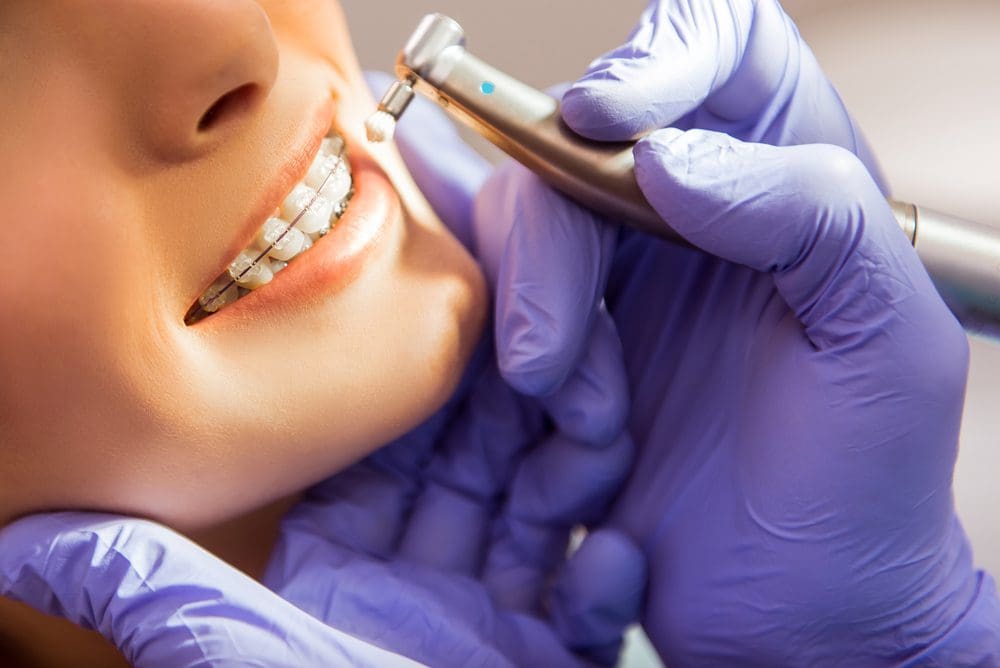Comprehensive Overview to Orthodontics Treatments for Dealing With Oral Misalignments
In the world of orthodontics, the trip to achieving a perfectly straightened smile involves a myriad of procedures customized to fix dental imbalances. From traditional braces to unnoticeable aligners and even surgical alternatives, the area of orthodontics offers a variety of solutions to deal with varying levels of oral abnormalities. Comprehending the intricacies of each procedure, including their devices, benefits, and potential drawbacks, is vital in making notified decisions about one's orthodontic treatment. As we browse via the comprehensive overview to orthodontic procedures for fixing dental imbalances, the complex details of each approach will certainly unfold, shedding light on the course towards a unified and practical oral placement.
Orthodontic Procedures Summary

In enhancement to clear aligners and conventional braces, orthodontists might additionally recommend other interventions like headwear, palatal expanders, or retainers to deal with details placement issues (cumming aligners). These procedures are tailored per person's special requirements and might entail a combination of treatments to achieve the wanted results. Routine adjustments and surveillance are important parts of orthodontic therapy to make certain progression is on track and to make any essential alterations along the road. By undertaking orthodontic procedures, people can not only accomplish a straighter grin however additionally enhance their general oral wellness and function.
Conventional Braces: Just How They Function
When taking into consideration orthodontic treatments for oral misalignments, standard dental braces stand out as a tried and true technique for fixing teeth placing. Typical dental braces are composed of brackets, wires, and bands that collaborate to apply continual stress on the teeth, progressively relocating them right into the desired alignment. The brackets are attached to the teeth making use of an unique adhesive, and the cables are threaded with the brackets. By adjusting the stress of the wires, orthodontists can control the direction and pressure related to each tooth, assisting them right into correct alignment over time.
As pressure is applied to the teeth with the dental braces, the bone surrounding the teeth is improved to support the new tooth positions. People will certainly need routine adjustments at the orthodontist's workplace to make sure the braces proceed to apply the correct stress for effective teeth movement.
Undetectable Aligners: Cons and pros
These clear, tailor-made trays are practically undetectable when put on, making them an appealing option for people seeking a more aesthetically pleasing orthodontic therapy. Clients can get rid of the aligners before consuming or brushing their teeth, minimizing the risk of food getting stuck in the home appliance and streamlining the cleansing procedure.

Surgical Orthodontic Options
Surgical treatments in orthodontics present feasible options for resolving complex dental misalignments that might discover this info here not be efficiently dealt with through traditional orthodontic therapies. While conventional braces and unseen aligners can correct several orthodontic issues, certain instances call for medical treatment to achieve optimal results. Surgical orthodontic alternatives are usually advised for extreme malocclusions, considerable jaw inconsistencies, and instances where the underlying bone structure requires adjustment to attain correct placement.
One usual surgical orthodontic procedure is orthognathic surgery, which includes rearranging the jaws to fix functional problems such as problem chewing or talking. This surgical procedure is usually performed in collaboration with an orthodontist that aids align the teeth before and after the procedure. Surgical orthodontics may additionally entail procedures to subject impacted teeth, eliminate excess gum cells, or reshape the jawbone to produce a more unified face profile.
Before considering surgical orthodontic alternatives, individuals undergo a comprehensive examination to figure out the necessity and prospective advantages of such treatments. aligners. While surgical procedure may seem difficult, it can dramatically improve both the function and visual appeals of the smile in cases where standard orthodontic treatments fail
Retainers and Post-Treatment Care

Post-treatment treatment entails adhering to the orthodontist's guidelines diligently. This may include appropriate dental health practices, attending follow-up consultations, and using the retainers as recommended. Failing to follow post-treatment treatment guidelines can cause regression, where the teeth gradually return in the direction of their initial settings. Regular retainer wear, great dental hygiene, and normal oral exams are necessary for preserving the results accomplished via orthodontic surgical treatment and ensuring the long-term security of the dealt with dental placement.
Verdict
Finally, orthodontic procedures supply different options for fixing dental imbalances. Traditional braces utilize steel view publisher site braces and cords to shift teeth right into correct positioning. Invisible aligners give a more discreet choice but might not be ideal for all instances. Surgical orthodontic choices are offered for much more serious misalignments. Retainers are typically utilized post-treatment to keep the brand-new alignment. On the whole, orthodontic procedures can properly improve dental wellness and visual appearance.
As we browse through the extensive overview to orthodontic procedures for remedying dental misalignments, the detailed information of each method will unravel, losing light on the course toward a useful and harmonious oral placement. - cumming braces
One of the most common orthodontic therapies is the use of Read More Here braces, which are composed of metal brackets and cables that apply gentle stress to progressively move teeth right into the desired position.When thinking about orthodontic treatments for dental misalignments, typical dental braces stand out as a time-tested technique for correcting teeth positioning. Furthermore, unnoticeable aligners may not be suitable for complex orthodontic issues that require more significant teeth activity, as they are normally suggested for moderate to moderate cases. Retainers are custom-made orthodontic devices designed to hold teeth in their corrected settings after the conclusion of orthodontic therapy.